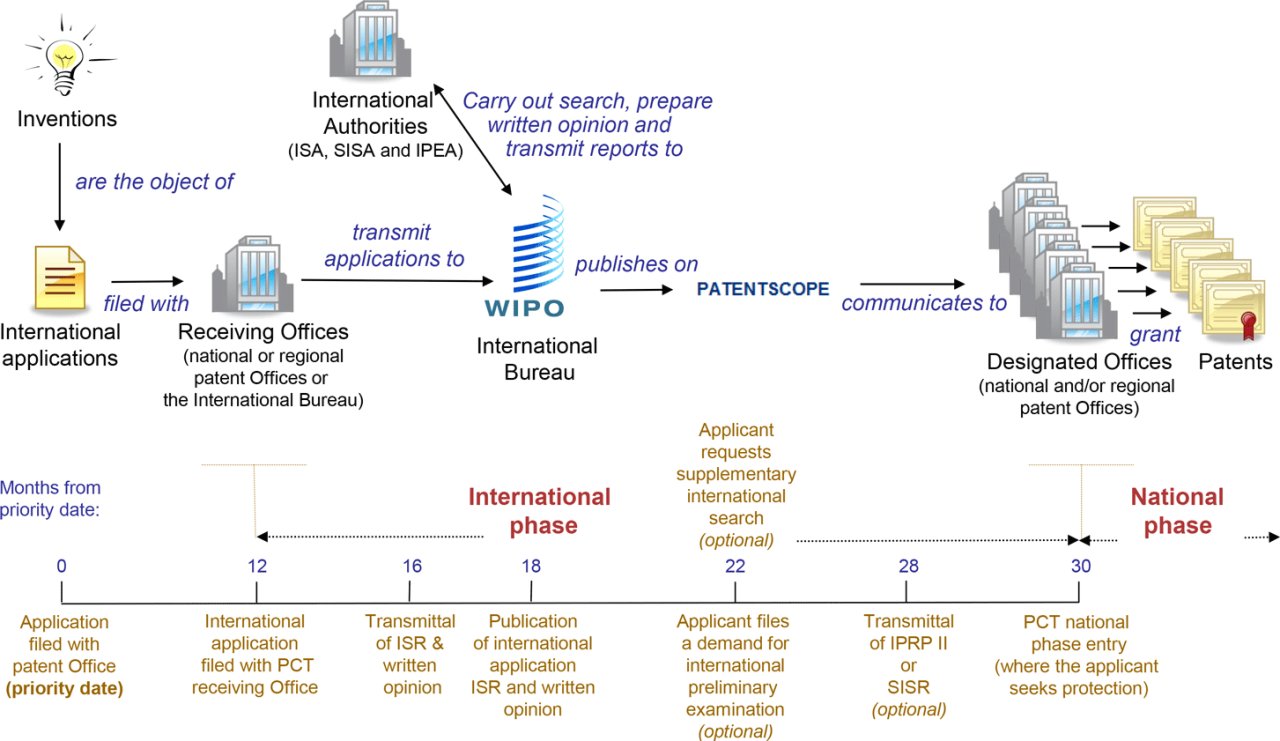In the process of securing patent rights internationally, you may have filed a single international patent application, and now you're left with the national phase. What is the national phase, and what do you need to do?
In the national phase, you'll file separate patent applications in each country or jurisdiction that you want protection in to obtain a patent. The process requires following the specific requirements and procedures of each jurisdiction, which typically vary place to place.
What is Entry into the National Phase?
The national phase is the process of seeking patent protection by sending your international application before each designated Contracting State's office. Think of your international application as evolving into a national or regional one from its original filing date. Each office you file in will individually decide whether to grant you protection for your invention. The timeline for this part of the process is typically extended until the international phase ends (marked by the expiration of time limits).
Once the request for entry into the national phase is filed and the national fee is paid, the designated office will process the international application as a national application. Each jurisdiction will have certain requirements, such as submitting translations, paying additional fees, or making amendments to the application.
Here's an overview of the PCT system and pre-national phase entry timeline for your reference (WIPO).
Key Considerations
A PCT applicant must enter the national stage of each desired member country by filing a national stage application in each respective country or region. A couple key considerations to be aware of:
Timing: PCT applications extend the deadline for filing utility patent applications, both in the US and internationally. This extended deadline typically falls either 30 or 31 months from the earliest filing date (or the priority date in patent parlance). For certain designated offices, the applicable time limit is 20 months, while others have extended time limits beyond even 30 months.
Prerequisites: Before entering the national phase, applicants must complete certain actions, including:
paying the national fee
submit a translation (if needed)
providing a copy of the international application (in exceptional cases)
Best Practices for Entry into the National Phase
Given the time sensitive nature of patents, start planning and deciding which countries to pursue well in advance of the national stage deadline. For the most part, do this before the 30th month from the priority date ends for most PCT Contracting States’ patent offices.
Entering the national phase involves certain costs, which primarily include the national fee. The timing for these fees generally coincides with the initiation of the national phase. The exact cost can vary significantly between different patent offices. You can leverage resources such as Fenwick's national phase initial filing estimates.
The national phase entry process varies between countries or regions. You can imagine that it can it get quite complex if you're looking to get protection in a multitude of countries. An experienced patent attorney can help navigate entry into the national phase as each jurisdiction has its own rules, procedures, and timelines.
FAQs
What is the difference between PCT and national phase?
The national phase is part of the PCT system: it is an integral segment of the Patent Cooperation Treaty (PCT) procedure, and it comes right after the international phase. The PCT system itself is composed of the two main phases of (1) an international phase and (2) a national phase (1+).
